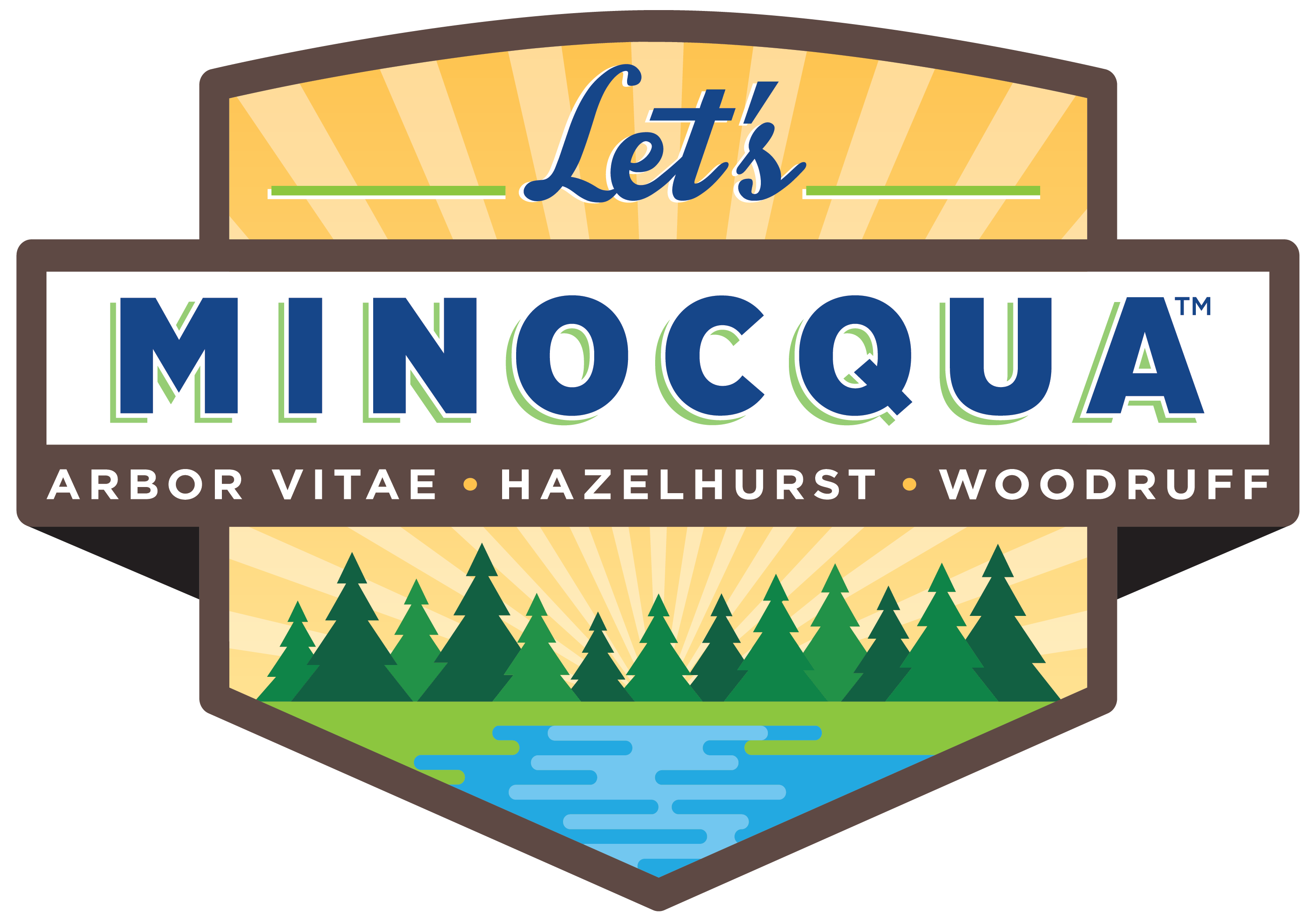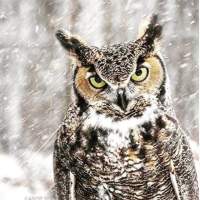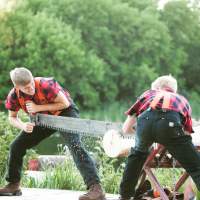Snowshoe baseball tradition draws hundreds each week.
Baseball is not generally considered a contact sport, but on Monday nights in Lake Tomahawk, there is frequent contact with the ground. And baseball players here don’t wear the cleats other baseball players wear for added traction and speed. Forget all that. Up here, real baseball players wear snowshoes. specifically, wooden snowshoes. Why wooden? Because the players are hard on them. Aluminum snowshoes would get bent and broken in just a few games, says Don Hilgendorf, longtime and now retired General Manager of the leading snowshoe baseball team in the world. The sport is hard on the players, too, who range in age from 21 to 55, with most in the 30- to 40-age range.
“You have to remember to shuffle,” adds Hilgendorf. “If you bend your knees too much, you fall,” an outcome that makes the crowd roar with approval. Fans also love the surprise moment in every game when a honeydew melon painted fluorescent yellow is smuggled onto the field, tossed by the pitcher, and hit by the batter. the point? “to splatter the ump, of course,” says Hilgendorf. There aren’t many home runs in snowshoe baseball, but when the ball hits the roof of American legion Post #318 in left field, it counts as one.
Snowshoe baseball is a tradition with a rich history. The Lake Tomahawk Snowhawks played snowshoe baseball on snow in the 1940s and ’50s, and even won a world championship. In 1961, at the urging of then town chairman Ray Sloan, the team began playing on a field of wood chips and sawdust to amuse summer tourists. A tradition was born and lake tomahawk claimed its fame as “the Snowshoe Baseball Capital of the World.”
Families crowd the streets, people greet one another like old friends and the festive air is palpable. Starting early in the morning, or even the night before, fans — sometimes as many as 1,200 — reserve their seats by laying blankets on the bleachers (capacity: 800-900), or positioning chairs at the edge of snowshoe Park.
In the minutes before the game begins, fans crowd around the players for a friendly autograph session. At 7:30 sharp, it’s game time. The game is played with no gloves and a 16-inch fluorescent yellow baseball. The color is a hold-over from the winter sport, when a white ball was invisible. And if a ball goes into the stands, the unwritten rule is that you have to toss it back. “We can’t afford to lose the balls,” says now retired team manager Hilgendorf.
The team has a modest operating budget — in the neighborhood of $20,000 — to cover equipment, sound system and occasional improvements to the ballpark. Some dozen-and-a-half volunteers work at several activities to raise the necessary funds. Some staff a concession stand selling team merchandise, others pass a butterfly net among the spectators to collect donations and still others sell tickets to a 50/50 raffle that raises in the neighborhood of $500 at each game. The team splits the proceeds with the weekly raffle winner.
The highlight for many spectators at the weekly games is a slice of the 70 to 80 homemade pies sold by area service clubs and community groups. All the groups pitch in every week to provide the pies, and each week, a different organization benefits from the proceeds. “The ladies in aprons are the unsung heroes of snowshoe baseball,” says Hilgendorf.
Big sellers are cherry, apple, banana cream, and that summer classic, lemon meringue, “which never lasts more than 30 minutes when it’s available,” says Pat Duncan of the local lioness club. Up-to-the-minute flavor availability is tracked on a big eraser board in the pie tent. among the more unusual pies are peanut butter, rhubarb peach and chocolate chip toffee. Duncan’s own contribution is the signature sawdust pie, a confection of coconut and pecans. A local fan has produced the Lake Tomahawk Snow Shoe Baseball Pie Cookbook with 84 of her favorite game-day pie recipes, now a collector’s item.
The pie concession sells out before the game even begins. “Ten years ago, you could get by with 25 to 30 pies,” notes Hilgendorf, whose favorites are chocolate walnut and coconut cream. “Now you have to have 60 to 70 pies just to run a ball game.”








